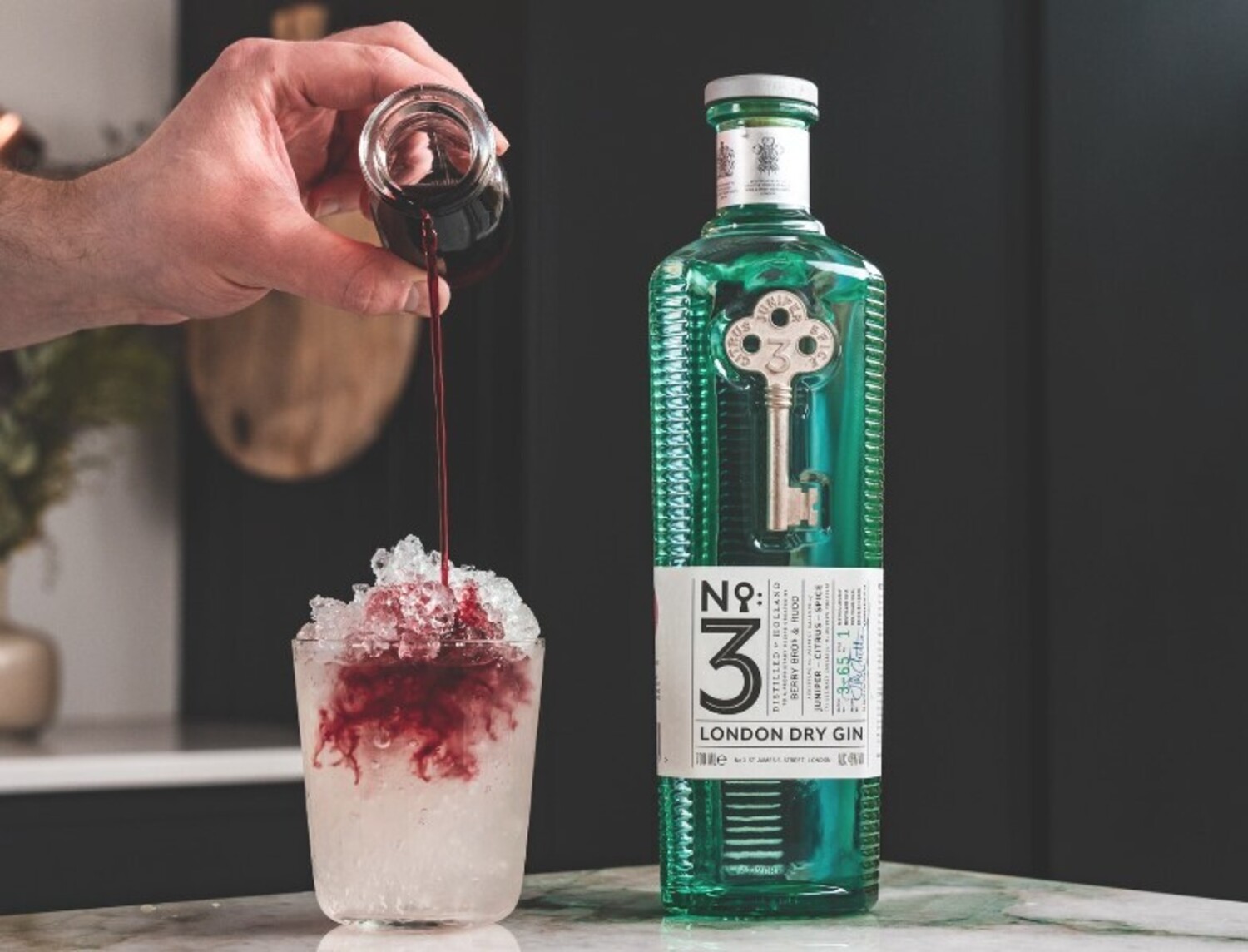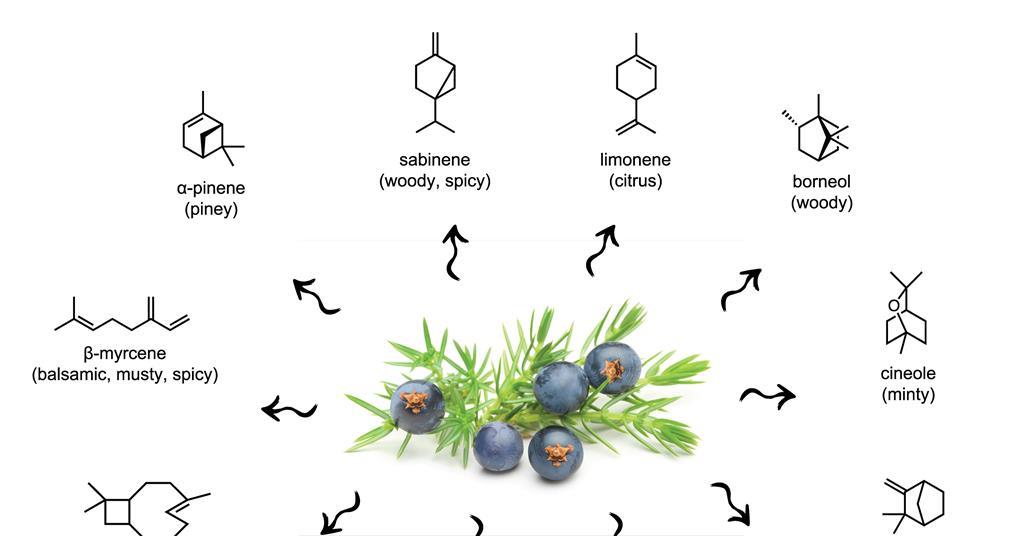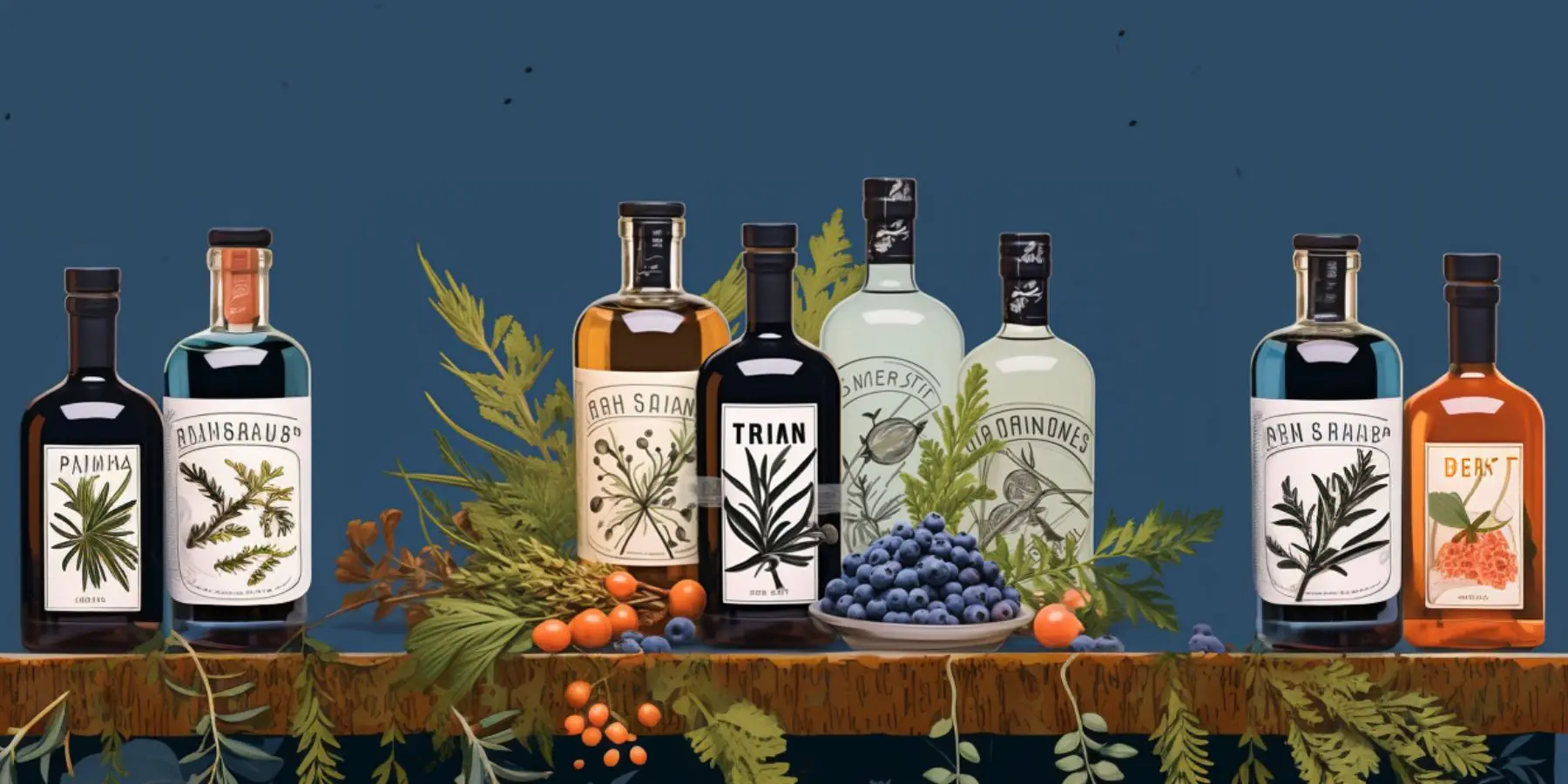
Introduction
Introduction To The Main Flavor Of Gin
When it comes to the main flavor of gin, it is often described as juniper-forward. Juniper berries are the key ingredient in gin and contribute to its distinct taste. However, gin is not solely defined by juniper. In fact, there are a variety of other botanicals that play a role in shaping its flavor profile.
Explanation Of Botanical Elixir Essence
Botanicals are the ingredients used to infuse flavor into gin. They are typically a combination of herbs, spices, fruits, and roots that are distilled along with juniper berries. These botanicals contribute to the unique taste and aroma of each gin brand.
To fully understand the main flavor of gin, it is helpful to explore the individual botanicals that are commonly used. Some of the most common botanicals found in gin include:
- Coriander: Adds a warm, citrusy, and slightly spicy flavor to gin.
- Angelica root: Imparts earthy, herbal, and slightly sweet notes.
- Lemon peel: Provides a bright and zesty aroma.
- Orris root: Adds a floral and slightly woody flavor.
- Cassia bark: Contributes a warm, cinnamon-like taste.
- Cardamom: Offers a sweet, floral, and spicy essence.
- Cubeb berries: Adds a peppery and slightly bitter flavor.
- Grains of paradise: Imparts a peppery and citrusy taste.
It’s important to note that the combination and proportions of these botanicals can vary from brand to brand, which is why different gins have unique flavor profiles.
In conclusion, while the main flavor of gin is often described as juniper-forward, it is the combination of botanicals that contribute to its overall taste. Exploring different gin brands and their specific botanical blends can help you discover the flavor profile that suits your palate. So, don’t be afraid to try new combinations and dive into the diverse world of gin flavors.
The Base Spirit Of Gin
The Role Of The Base Spirit In Gin’s Flavor
The base spirit is a crucial component of gin and plays a significant role in shaping its flavor. While juniper berries are the backbone of gin and provide its distinct piney character, the base spirit sets the foundation for the overall taste.
Understanding The Influence Of The Base Spirit On The Final Taste
The base spirit used in gin production can vary and can include spirits like vodka or grain alcohol. The choice of base spirit can impact the overall flavor profile of the gin.
Vodka-based gins tend to have a softer and smoother taste, allowing the botanicals to shine through. On the other hand, gins made with grain alcohol as the base spirit often have a bolder and more robust flavor.
Additionally, the quality and characteristics of the base spirit can also affect the final taste of the gin. Distillers may choose a base spirit that is neutral in flavor to allow the botanicals to take center stage. Alternatively, they may opt for a base spirit with its own unique character, adding depth and complexity to the gin.
It’s important to note that while juniper is the defining flavor of gin, the base spirit and the botanicals work together to create a harmonious and well-balanced taste. Experimenting with different base spirits can lead to discovering a gin that aligns with your preferred flavor profile.
In conclusion, the base spirit in gin is a crucial element that influences the overall taste. Whether it’s a vodka or grain alcohol-based gin, the choice of base spirit, along with the botanicals, contributes to the unique flavor profile of each gin brand. Exploring different gin varieties can help uncover your preferred taste and enhance your gin-drinking experience.
The Base Spirit Of Gin
The Role Of The Base Spirit In Gin’s Flavor
The base spirit is a crucial component of gin and plays a significant role in shaping its flavor. While juniper berries are the backbone of gin and provide its distinct piney character, the base spirit sets the foundation for the overall taste.
Understanding The Influence Of The Base Spirit On The Final Taste
The choice of base spirit can impact the overall flavor profile of the gin. Vodka-based gins tend to have a softer and smoother taste, allowing the botanicals to shine through. On the other hand, gins made with grain alcohol as the base spirit often have a bolder and more robust flavor.
The quality and characteristics of the base spirit can also affect the final taste of the gin. Distillers may choose a base spirit that is neutral in flavor to allow the botanicals to take center stage. Alternatively, they may opt for a base spirit with its own unique character, adding depth and complexity to the gin.
While juniper is the defining flavor of gin, the base spirit and the botanicals work together to create a harmonious and well-balanced taste. Experimenting with different base spirits can lead to discovering a gin that aligns with your preferred flavor profile.
In conclusion, the base spirit in gin is a crucial element that influences the overall taste. Whether it’s a vodka or grain alcohol-based gin, the choice of base spirit, along with the botanicals, contributes to the unique flavor profile of each gin brand. Exploring different gin varieties can help uncover your preferred taste and enhance your gin-drinking experience.
Botanicals In Gin
Exploring The Variety Of Botanicals Used In Gin
Botanicals are the carefully chosen flavorful ingredients that define each gin’s unique taste. In addition to juniper berries, other botanicals commonly used in gin production include fruits, seeds, and spices. The selection and combination of botanicals vary from brand to brand, resulting in a wide range of flavor profiles.
The Impact Of Different Botanicals On The Flavor Profile
Each botanical contributes specific aromatic and flavor characteristics to the gin. For example, citrus peels such as lemon and orange can add bright and zesty notes, while spices like coriander and cardamom bring warmth and complexity. Herbs like lavender and rosemary can impart floral and earthy undertones.
The choice and proportions of botanicals used will greatly influence the overall taste of the gin. Distillers experiment with different botanical combinations to create unique and interesting flavor profiles. Understanding the botanicals used in a gin can help you appreciate the complexity and depth of its taste.
Whether you prefer a gin with vibrant citrus notes, a herbaceous and floral character, or a more traditional juniper-forward flavor, exploring the botanicals used in gin can lead to discovering new and exciting taste experiences.

Juniper Berries
The Significance Of Juniper Berries In Gin Production
Juniper berries play a crucial role in the production of gin, as they provide the signature flavor that sets it apart from other spirits. These small berries, technically known as “modified conifer cones,” are derived from the juniper plant, a coniferous evergreen.
Juniper Berries As The Defining Flavor Of Gin
The dominant botanical in gin, juniper berries give the spirit its distinct herbal, piney, and almost medicinal flavor. This botanical defines the taste profile of gin and acts as the backbone of its flavor. Without juniper berries, gin would not have its characteristic taste.
In addition to juniper berries, other botanicals such as fruits, seeds, spices, and herbs are used in the production of gin. Each botanical imparts its own unique aromas and flavors to the final product, resulting in a wide range of taste profiles. However, it is the juniper berries that take center stage and give gin its primary flavor.
The choice of base spirit also influences the overall taste of gin. Vodka-based gins tend to have a softer and smoother taste, allowing the botanicals to shine through. Grain alcohol-based gins, on the other hand, have a bolder and more robust flavor. Distillers may select a base spirit that is neutral in flavor, allowing the juniper berries and other botanicals to take the spotlight, or they may opt for a base spirit with its own unique character, adding depth and complexity to the gin.
Understanding the significance of juniper berries and the interplay between the base spirit and botanicals is essential in discovering and appreciating the diverse flavors of gin. Whether you enjoy a gin with a more pronounced juniper-forward taste or prefer one with a balance of different botanicals, exploring the world of gin can be a delightful journey of taste exploration.
Other Botanicals In Gin
The Use Of Herbs, Berries, Roots, Spices, And Flowers In Gin
While juniper berries are the defining botanical in gin, there are numerous other ingredients used in its production to create a wide range of flavors. These botanicals can include herbs, berries, roots, spices, and flowers.
Herbs such as coriander, angelica root, and licorice root are commonly found in gins. These add a complexity of flavor and contribute to the overall balance of the spirit. Berries like citrus peels, lemon, and orange are often used to give gin a bright and refreshing citrusy note. Roots such as orris and ginger can add earthy and spicy undertones.
Spices like cinnamon, cardamom, and black pepper can provide warmth and a hint of heat to the gin. Floral botanicals like lavender, rose petals, and chamomile can add delicate and aromatic floral notes to the spirit.
The Contributions Of These Botanicals To Gin’s Flavor
Each botanical used in gin production brings its own unique aromas, flavors, and characteristics to the final product. The combination and balance of these botanicals result in a diverse range of taste profiles for gin.
For example, a gin that highlights the citrus peels and uses a variety of spices may have a zesty and vibrant flavor. On the other hand, a gin that focuses on floral botanicals may have a more fragrant and delicate profile.
These additional botanicals, along with the juniper berries, work together to create a harmonious and well-rounded taste experience. Whether you prefer a gin with a strong emphasis on juniper or one that showcases a variety of botanicals, exploring the different combinations and variations of gin can be an exciting journey for your taste buds.
So next time you pour yourself a gin and tonic or mix up a classic cocktail, take a moment to appreciate the intricate blend of botanicals that contribute to the complex and fascinating world of gin.
Citrus Botanicals
The Inclusion Of Citrus Botanicals, Such As Lemon, In Gin
The use of citrus botanicals, such as lemon, is a common practice in gin production. These botanicals add a bright and refreshing citrusy note to the spirit. Lemon, in particular, is often used for its tangy and zesty flavor.
When crafting gin, distillers carefully select and include specific citrus peels to enhance the taste and aroma. The oils in the citrus peels contribute to the overall flavor profile, infusing the gin with a distinct citrus essence.
The Effect Of Citrus Flavors On The Overall Taste
The citrus botanicals play a significant role in shaping the flavor profile of gin. The addition of lemon and other citrus peels can bring a burst of tanginess and acidity to the spirit, balancing out the earthy and herbal notes of juniper and other botanicals.
Citrus flavors can add a refreshing and bright element to gin, making it a popular choice for cocktails and mixed drinks. The citrusy undertones can complement other ingredients, such as tonic water or vermouth, creating a harmonious blend of flavors.
Furthermore, the inclusion of citrus botanicals can enhance the overall drinking experience by providing a burst of freshness and a pleasant aroma. The vibrant citrus notes can awaken the senses and create a lively and invigorating taste.
Whether you prefer a gin with a pronounced citrus flavor or one that has a more subtle hint of lemon, the inclusion of citrus botanicals adds depth and complexity to the taste profile. The carefully balanced combination of juniper berries and citrus botanicals results in a gin that is versatile, flavorful, and enjoyable.
Next time you indulge in a gin-based drink, take a moment to appreciate the contribution of the citrus botanicals in creating the vibrant and refreshing taste that is synonymous with gin.

Characteristics Of Gin Flavor
Gin is known for its distinct flavor profile, with juniper as the main botanical, providing a resinous and piney taste. However, the flavor of gin is not limited to juniper alone. There are other characteristics that contribute to the overall taste experience:
Examining The Tart And Fresh Taste Of Gin
One of the notable characteristics of gin is its tart and fresh taste. This can be attributed to the inclusion of citrus botanicals, such as lemon, in the production process. The addition of citrus peels adds a bright and refreshing citrusy note to the spirit. The tanginess and zesty flavor of lemon in particular enhance the overall taste profile of gin.
Understanding Why Gin Flavor Doesn’t Linger
Unlike some other spirits, the flavor of gin doesn’t linger for a long time. This can be attributed to the relatively low sugar content and the presence of botanicals that contribute to a clean and crisp finish. The herbal and spicy notes, along with the citrus undertones, create a well-balanced flavor profile without overpowering the palate.
Gin’s unique flavor profile makes it a versatile spirit that can be enjoyed on its own or in various cocktails and mixed drinks. Its combination of juniper, citrus, and other botanicals provides depth and complexity, allowing for a wide range of flavor possibilities.
Next time you savor a gin-based drink, take a moment to appreciate the intricate characteristics that contribute to its distinct flavor. From the tartness of citrus to the herbal and spicy undertones, gin offers a delightful taste experience that continues to captivate enthusiasts around the world.
Popular Gins With Noticeable Lemon Flavor
Gin is renowned for its diverse range of flavors, and one of the prominent botanicals that contributes to its taste profile is lemon. Here are some popular gins that showcase a noticeable lemon flavor:
Highlighting Gins Where Lemon Taste Is Prominent
- Tanqueray No. Ten: This gin is crafted with fresh citrus fruits, including limes and grapefruits, which lend a distinct zesty and lemony taste. It delivers a bright and refreshing flavor.
- G’Vine Floraison: Made with vine flowers, this gin has subtle lemony notes that provide a delicate and floral taste. It offers a unique twist on the classic gin flavor.
- Beefeater Crown Jewel: Known for its rich and complex flavor, this limited-edition gin features lemon peel as one of its botanicals. The lemony undertones add a vibrant and citrusy element to the overall taste.
Bluecoat American Gin As An Example Of Gin With Prominent Limonene
While lemon peel is a common botanical used in gin production, some gins highlight a specific lemon compound called limonene. One such example is Bluecoat American Gin. This gin utilizes organic citrus peels, including lemon, to extract the natural aromatic oils that contain limonene. It results in a gin with a bright and pronounced lemon flavor, giving it a refreshing and zingy character.
When exploring the world of gin, be sure to try these gins with a noticeable lemon flavor. Their citrusy notes will add a delightful twist to your cocktails and elevate your gin-drinking experience.
Popular Gins With Noticeable Lemon Flavor
Gin is renowned for its diverse range of flavors, and one of the prominent botanicals that contributes to its taste profile is lemon. Here are some popular gins that showcase a noticeable lemon flavor:
Highlighting Gins Where Lemon Taste Is Prominent
- Tanqueray No. Ten: Crafted with fresh citrus fruits, including limes and grapefruits, Tanqueray No. Ten offers a distinct zesty and lemony taste. Its bright and refreshing flavor makes it a popular choice.
- G’Vine Floraison: Made with vine flowers, this gin has subtle lemony notes that provide a delicate and floral taste. It offers a unique twist on the classic gin flavor.
- Beefeater Crown Jewel: Known for its rich and complex flavor, Beefeater Crown Jewel features lemon peel as one of its botanicals. The lemony undertones add a vibrant and citrusy element to the overall taste.
Bluecoat American Gin As An Example Of Gin With Prominent Limonene
While lemon peel is a common botanical used in gin production, some gins highlight a specific lemon compound called limonene. One such example is Bluecoat American Gin. This gin utilizes organic citrus peels, including lemon, to extract the natural aromatic oils that contain limonene. It results in a gin with a bright and pronounced lemon flavor, giving it a refreshing and zingy character.
When exploring the world of gin, be sure to try these gins with a noticeable lemon flavor. Their citrusy notes will add a delightful twist to your cocktails and elevate your gin-drinking experience.
Conclusion
Summary Of The Main Flavor Of Gin
Gin is a versatile spirit with a wide range of flavor profiles, but the main flavor is often described as juniper-forward. Many other botanicals, including lemon, contribute to its unique taste. Exploring the diverse world of gin flavors allows you to appreciate the complexity and variety that botanicals bring to the spirit.
Appreciating The Complex And Diverse Botanicals In Gin
Gin is primarily made from juniper berries and infused with a variety of botanicals to create distinct flavors. These botanicals serve to enhance the flavor and aroma profile of gin. Visiting distilleries or speaking with knowledgeable bartenders can provide valuable insights into the specific botanicals used in different gins. Don’t be afraid to try new combinations and explore the diverse world of gin flavors.
FAQ: What is the Main Flavor of Gin?
Q: What gives gin its unique flavor?
A: The main flavor of gin is derived from a variety of botanical ingredients, collectively known as the “botanical elixir essence.” This blend of botanicals is what distinguishes gin from other spirits and gives it its distinct taste.
Q: What are botanicals?
A: Botanicals are natural plant-based ingredients that impart flavors and aromas to a distilled beverage like gin. These can include herbs, spices, fruits, flowers, roots, and seeds. Each botanical contributes its own unique characteristics to the final flavor profile of the gin.
Q: How is the botanical elixir essence created?
A: To create the botanical elixir essence, various botanicals are carefully selected and combined in specific proportions. They are then macerated or infused in the base spirit, usually grain alcohol, to extract their flavors. This process allows the botanical essences to infuse the spirit, giving gin its signature taste.
Q: What are some common botanicals used in gin production?
A: The choice of botanicals used in gin production is vast and can vary greatly from brand to brand. However, some frequently used botanicals include juniper berries (the essential botanical in gin), coriander seeds, angelica root, citrus peel, orris root, cinnamon, cardamom, and various herbs and spices. These botanical combinations create a diverse range of gin flavors.
Q: Does the ratio of botanicals affect the flavor of gin?
A: Yes, the ratio and combination of botanicals significantly impact the flavor of gin. Different distillers may use varying proportions of each botanical to achieve their desired flavor profile. This allows for a wide spectrum of gin flavors, spanning from dry and citrus-forward to herbaceous and spiced.
Q: Are there different styles of gin based on their botanical profiles?
A: Absolutely! The variation in botanical combinations and proportions gives rise to different styles of gin. Some popular styles include London Dry Gin (predominantly juniper-forward), Old Tom Gin (slightly sweeter with more complex botanicals), and New Western Dry Gin (more emphasis on non-traditional botanicals, such as floral or fruity notes).
Q: Can the botanicals used in gin be customized?
A: Yes, distillers have the creative freedom to experiment with different botanical blends to create unique flavors. This is what makes the world of gin so diverse and exciting. Some craft distilleries even forage for local botanicals, adding a hyper-local and distinctive touch to their gins.
In summary, gin gets its main flavor from the botanical elixir essence, a blend of botanical ingredients infused into the base spirit. The choice, ratio, and combination of botanicals contribute to the vast range of flavors found in various styles of gin, offering an array of tastes to suit different palates.

Welcome to the vibrant world of Round Midnight, a haven for jazz and blues enthusiasts in the heart of London. Nestled in The Agricultural at 13 Liverpool Rd, London N1 0RW, United Kingdom, Round Midnight is the city’s sole dedicated venue for soul-stirring jazz and blues melodies. Since its inception, Round Midnight has been committed to curating an unparalleled live music experience, hosting electrifying performances a staggering eight times a week. With free entry every time, we ensure that the magic of jazz and blues is accessible to all who seek it.